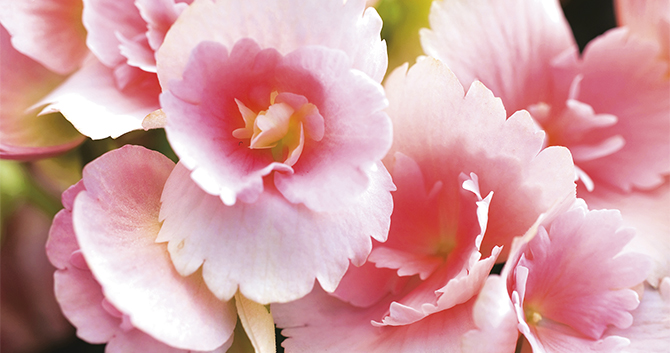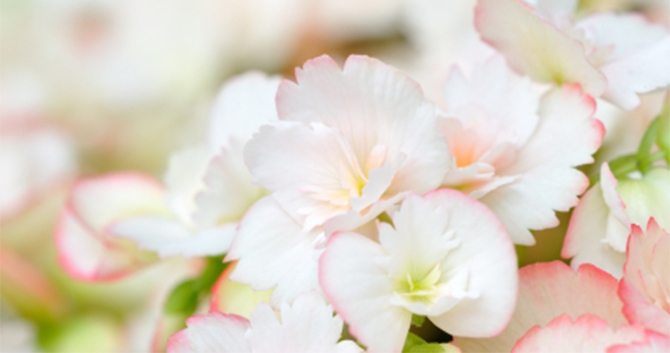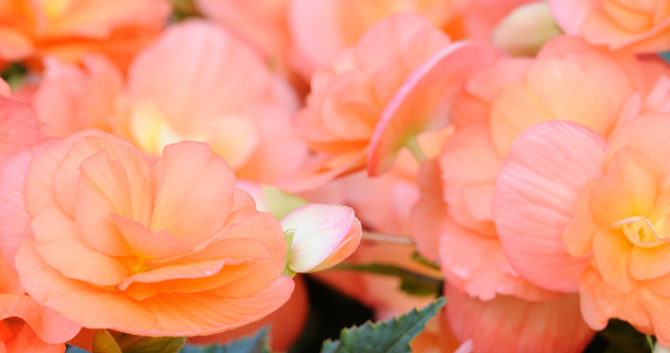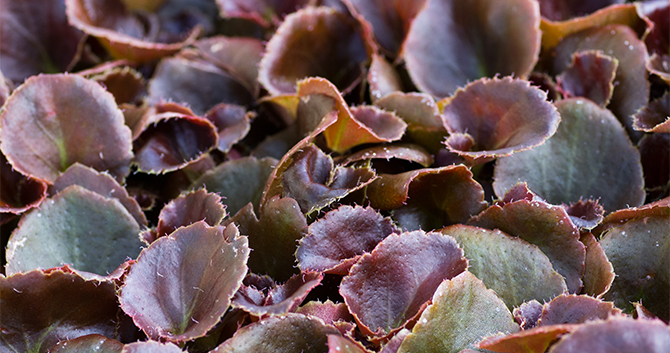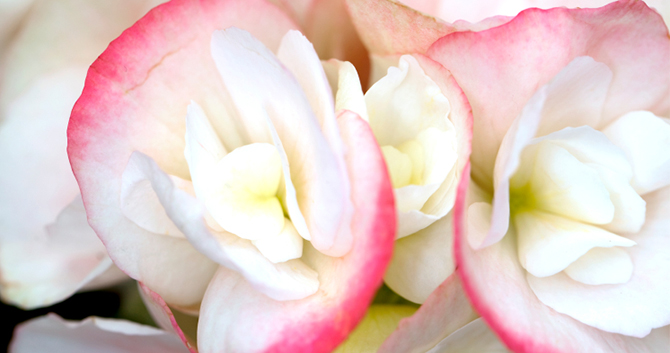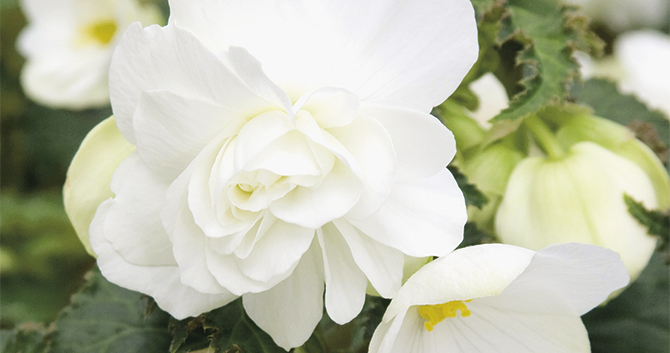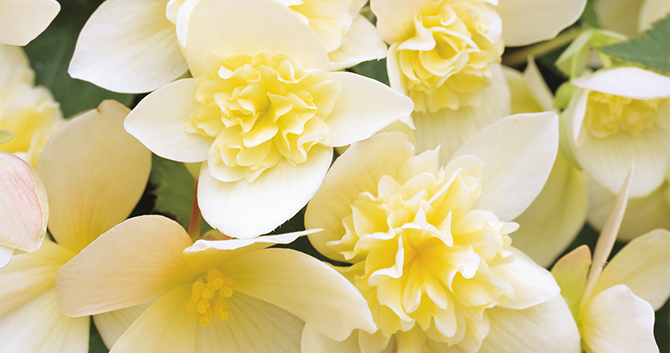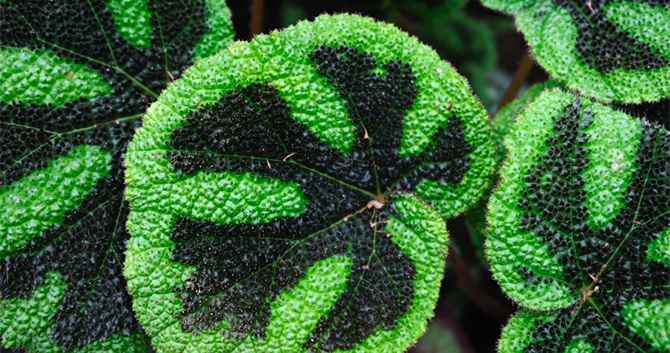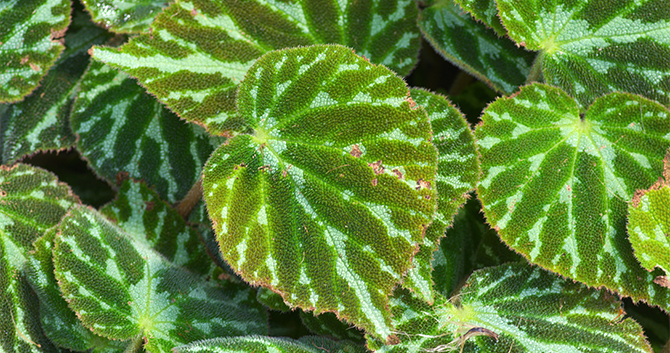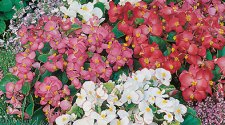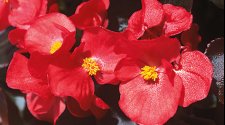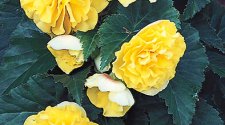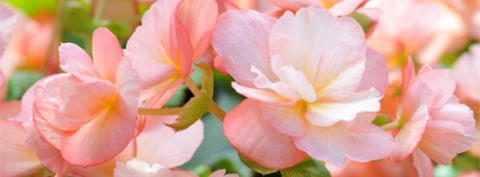 Begonias are ideal indoor plants - adding gorgeous color and forgiving neglect
Begonias are ideal indoor plants - adding gorgeous color and forgiving neglect
Begonias offer something for everyone. Looking for a long display of flowers? There are begonias with large, lush, vibrant blooms in shades of scarlet, orange, or lemon. You'll also find petite, delicate blossoms in soft blush or pure white. Prefer a tapestry of richly colored and textured foliage? There is a begonia for that, too.
You may be familiar with begonias from your outdoor gardening but these diverse plants can also bring a new dimension to the indoor experience. Begonias prefer low levels of light and shine where other plants struggle. They’re forgiving of neglect, tolerating forgetful gardeners by storing water in their stems to survive periods of drought.
History
Begonia is a genus of over 1,000 species native to tropical and subtropical regions worldwide. They were discovered in 1690 by a Franciscan Monk, Charles Plumier, while on expedition in the rainforest of Brazil searching for medicinal plants. He named them for his patron, Michel Begon, an amateur botanist who was also the governor of Haiti.
Plumier passed away shortly after his discovery, and begonias didn’t take hold again in horticulture circles until the mid-1800's — and then quite by accident. Some were spread inadvertently to Europe in soil samples shipped from Brazil to the Berlin Botanical Garden in 1821. Others were unintentionally mixed with orchids shipped from India to England in 1856.
Eventually Richard Pierce discovered new species of begonias in unusual shades of yellow, red, and orange in the Andes Mountains, which intensified interest in these spectacular plants. Botanists began crossbreeding and hybridizing begonias in earnest to create the variety of colors, textures, and sizes we enjoy today.
Types of Begonias
There are three types of begonias based on their root structure - fibrous, rhizomatous, and tuberous. In general, fibrous and rhizomatous begonias make the best indoor plants. Tuberous begonias can also be grown indoors but do best as temporary flowering plants rather than long-term indoor accents because their growth cycle includes a dormancy period when flowers and foliage both die back.
Fibrous begonias are prized for their charming year-round flowers. Angel wings and cane begonias are the most well-known for indoor use, and wax begonias (semperflorens) are indispensable for the summer garden.
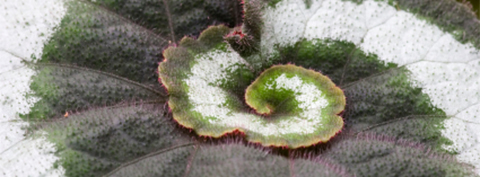 Begonias are prized grown for their spectacular foliage as much as for their flowers
Begonias are prized grown for their spectacular foliage as much as for their flowers
Rhizomatous begonias are ideal for someone looking for decorative patterns of color and intricately shaped silhouettes. With rhizomatous begonias, their delicate flowers are almost an afterthought! Among the most popular rhizomatous begonias is the Rex begonia which has an almost endless variety of speckled, painted, swirled, tucked and scalloped leaves in shades of green, chartreuse, mauve, merlot, white, and almost black.
Tuberous begonias are for anyone who loves tropical color. They produce spectacular flowers, ranging from abundant ½-inch blooms or voluptuous dinner-plate sized flowers. Among tuberous begonias, Rieger begonias are a favorite for brightening a room or adding pizzaz to a party.
Care Tips
After arriving home with your new begonia, you may ask yourself “Now what? " Whether you're growing begonias for the flowers or foliage, with a little know-how you can keep them looking their best.
Light: Begonias prefer bright but diffused light. Place them near a sunny window or under a lamp. Direct sunlight will scorch their leaves.
Water: Don’t over water your begonias – they like consistently moist soil, but soggy soil will do them in. Always check soil before watering, and when it feels dry ½ to 1 inch below the surface, pour water slowly over the surface until it runs out the holes in the bottom of your pot. Let it rest for about ½ hour, and repeat—discard any water that has pooled in the plant saucer or decorative outer pot.
Humidity: Begonias thrive on humidity! If the air in your home is dry, mist your plants daily or try using a humidifier. Another option is to set your begonia on a pebble tray to keep the surrounding air moist (see Sidebar).
Fertilizer: Apply fertilizer regularly when plants are actively growing, producing new leaves and/or flowers. Look for a fertilizer labeled specifically for begonias, and follow package instructions for application rates and frequency. If you choose to use an all-purpose product for indoor plants, you may want to dilute it to one-quarter strength for a gentler feeding.
Grooming: Flowering begonias often bloom continuously for months, so be sure to remove spent flowers and dead leaves to keep plants looking their best. If you have a Rex Begonia, remove the small flower buds as they start to emerge so that the plant can concentrate its energy on the foliage. If Rieger begonias stop forming new flower buds, give them a trim to encourage fresh new growth and another round of flowers.
Repotting
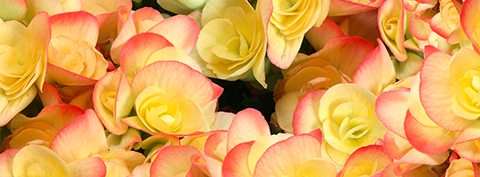 Begonias add tropical colors with prolific blooms that last for months
Begonias add tropical colors with prolific blooms that last for months
The best way to keep begonias happy and healthy is to grow them in relatively small pots. You’ll know it's time to repot when roots fill the container and plants begin to dry out more frequently. When choosing a new pot, remember that an oversized pot can lead to root problems and cause you to lose your plant. Look for a container that is only one inch wider that the current one. It can be the same height as the current container, or as much as one inch deeper.
After transferring your begonia to its new container fill in the void spaces with a high quality soil-less potting mix made from peat moss and perlite or vermiculite. This mix provide an ideal balance of good drainage and moisture retention for your begonia.
During the Summer…
Consider treating your indoor begonias to a summer vacation in the garden. The fresh air and brighter light will rejuvenate your plants and stimulate growth. When temperatures are consistently above 55 degrees Fahrenheit, move your potted plants to a shaded location in the garden. Initially, they should get no direct sunlight at all, but over the course of a few weeks, you may gradually expose to some morning sun or dappled light under a tree with an open canopy. To prevent plants from drowning during rainy weather, remove any plant saucers or decorative pots without drainage.
When weather begins to turn cold in the fall, it is time to bring the plants back indoors. Cut plants back a little to shape, and inspect them carefully for any signs of pests or disease. Treat any symptoms before bringing them in.
Rieger begonias will go dormant if the weather gets too hot, but bringing them outdoors to a cool, shaded spot may extend their flowering display. Trim plants occasionally to stimulate new flower buds and help prevent or delay dormancy. If your Rieger begonias begin to die back, they are most likely entering their dormant period. Either discard the plants, or cut back to the soil and place the pot in a cool, dark place such as a basement or root cellar. Bring them out when they days grow shorter in the fall, water well to wake them, then just as needed as you wait for new growth to resume.
Troubleshooting
Begonias are easy to grow and are relatively forgiving, but sometimes problems occur, the most common of which are related to light and water. Too much or too little water cause stress to the plant and will make it more susceptible to insects and disease. Too much light can scorch the plant and too little light will inhibit growth.
If your plant is wilting or leaves are dropping, it is probably not getting enough moisture. Check the soil regularly and increase watering as needed.
Faded, deformed or discolored foliage is a sign of nutrient problems. Chances are you are either over- or under- fertilizing your begonia. If you aren’t using a fertilizer designed for begonias, try switching to one and follow product instructions carefully. This should help to improve the soil and nutrient quality.
If your plant is sunburned or scorched it is suffering from too much light; move your plant to a location where it is better protected from direct sunlight.
If your plant looks sparse, spindly or flowering is reduced, it may be due to poor lighting. Try relocating your begonia to a brighter place, or supplementing with a plant light.

